Do I need a liner for a ventilation insert?
jr3andb
11 years ago
Featured Answer
Comments (9)
weissman
11 years agojr3andb
11 years agoRelated Discussions
What info do I need to figure out my hood ventilation?
Comments (29)Hi - this thread is a little old now so this might be too late, but I have some related Qs even after reading all this helpful advice. I'm starting gut reno of a 120+ year old townhouse in NYC and plan to install 36" bluestar with 2, 22K BTU burners (in addition to other smaller burners of course) which we'll use primarily for stir fry. We HATE grease smell in the house and cook all the time, so want to get what we need for the stove we have. So I'm fine getting major CFM, if that's what it takes, but my concern is the ducting. It seems we have 2 options - up an existing chimney (which we're having relined and is not used for fireplaces; fireplaces were all sealed up decades ago) - but that would be 3 stories or about 50 feet needed to get to the roof and I wonder if that's too far for it to function properly...2nd option would be to bring it down into a soffit on the floor below (a rental apartment that already has a dropped ceiling) and vent out of the exterior wall, but this would require making a new hole in our masonry, and would mean the venting would be just outside our kitchen, under a french door that we're likely to want to open often while we're cooking - so the smoke could in theory end up back in the kitchen, no? I am by no means an expert so forgive me if I'm totally off base here, but any thoughts/advice would be much appreciated. Thanks!...See MoreDo I really need ventilation over my gas range?
Comments (43)Judy - those cupcakes look yummy! I'm in your camp. The kitchen we are remodeling had a old vented hood. In the 7 years I have lived here, I think I turned it on maybe 2 or 3 times & that usually involved a toaster incident lol... I also cook plenty but like you, don't deep fry or sear/broil very often & use just small amounts of olive oil or butter when needed and not at high heat. I never had a problem with any grease build up or other gunk & I don't really find food smells offensive (well except when I was pregnant, but those days are over). This time around, I'm going with an OTR micro, b/c my counter space is limited & I hated that the big clunker was taking up so much of my precious counter space. (I'm now trying to figure out where I can hide my toaster oven for the same reason). I'm guessing I won't use the vent much this time around either - When we sell in 10-15 yrs - our kitchen will probably be getting to that "outdated" state anyway & will be redone again - the venting to outside is in place if they want to change back to a hood - but for me, this is just fine......See MoreDo you have a Vent a Hood liner insert
Comments (2)Yes, I have one, and had a custom hood built around it. You don't say what kind of stove/range you have, but we have a 48" dual fuel range with 6 burners and a griddle. I like all the lighting and fan options it offers. A smaller size probably wouldn't have as many since it's not as wide. It's on the loud side when turned on full blast, which I rarely do. We don't fry and only have all burners going for large gatherings/holiday meals....See MoreNeed help deciding on a gas fireplace liner/insert
Comments (6)I think brick + marble is such a good classic look. What is the style of your house? If you do brick and decide you don't like it, you could always paint it black. But as far as I know, you can't put a brick facade over a black liner. We just updated our 1980s fireplace and I wanted brick, but we had to stick with black. The fireplace store said you can't just pull out an old insert and put in a new one; it requires redoing the whole fireplace/chimney. So no pressure, but your choice is pretty permanent! :) Here they did herringbone marble tile and straight brick. It would also look great reversed -- herringbone brick and straight marble....See Moreweissman
11 years agojr3andb
11 years agoTrevor Lawson (Eurostoves Inc)
11 years agojr3andb
11 years agoweissman
11 years agokaseki
11 years ago
Related Stories
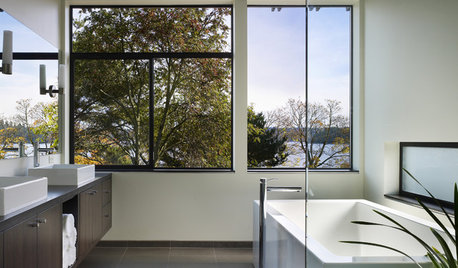
BATHROOM DESIGNGreen and Clean: Ventilate for a Healthy Bathroom
Ridding your bathroom of excess moisture is vital for indoor air quality. Here's how to do it best
Full Story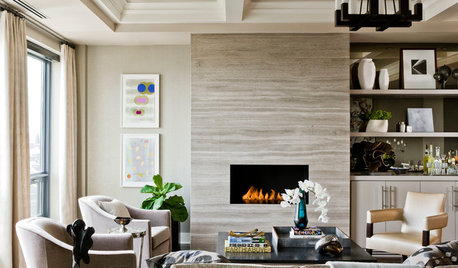
LIVING ROOMSHow to Convert Your Wood-Burning Fireplace
Learn about inserts and other options for switching your fireplace from wood to gas or electric
Full Story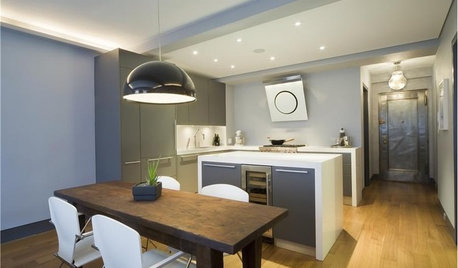
KITCHEN DESIGNHow to Choose the Right Hood Fan for Your Kitchen
Keep your kitchen clean and your home's air fresh by understanding all the options for ventilating via a hood fan
Full Story
LIFEThe Polite House: How Can I Kindly Get Party Guests to Use Coasters?
Here’s how to handle the age-old entertaining conundrum to protect your furniture — and friendships
Full Story
FEEL-GOOD HOME12 Very Useful Things I've Learned From Designers
These simple ideas can make life at home more efficient and enjoyable
Full Story
CLOSETSGuest Picks: I'm Dreaming of a Wide Walk-In
20 organizing ideas to get the most out of a small closet
Full Story
KITCHEN APPLIANCESLove to Cook? You Need a Fan. Find the Right Kind for You
Don't send budget dollars up in smoke when you need new kitchen ventilation. Here are 9 top types to consider
Full Story
REMODELING GUIDESModern Metal Fireplaces Open World of Possibilities
Allowing way more natural light than traditional fireplaces, and with some not even needing a vent, metal fireplaces are a major improvement
Full Story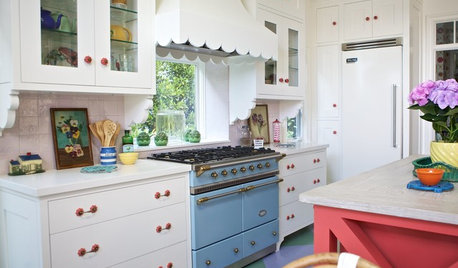
KITCHEN APPLIANCESThe Many Ways to Get Creative With Kitchen Hoods
Distinctive hood designs — in reclaimed barn wood, zinc, copper and more — are transforming the look of kitchens
Full Story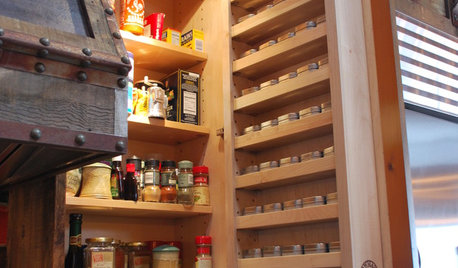
KITCHEN DESIGN7 Steps to Pantry Perfection
Learn from one homeowner’s plan to reorganize her pantry for real life
Full Story



onedogedie